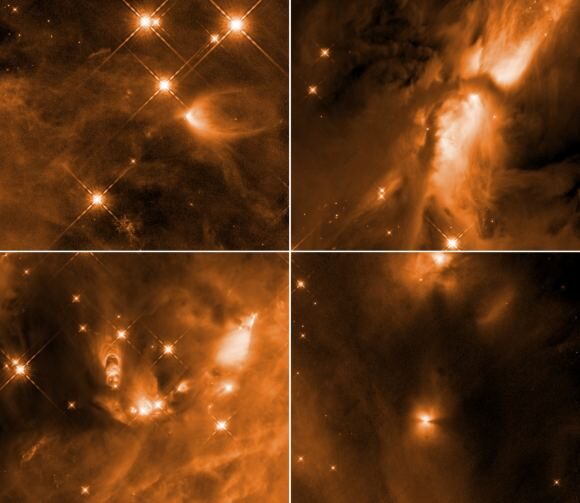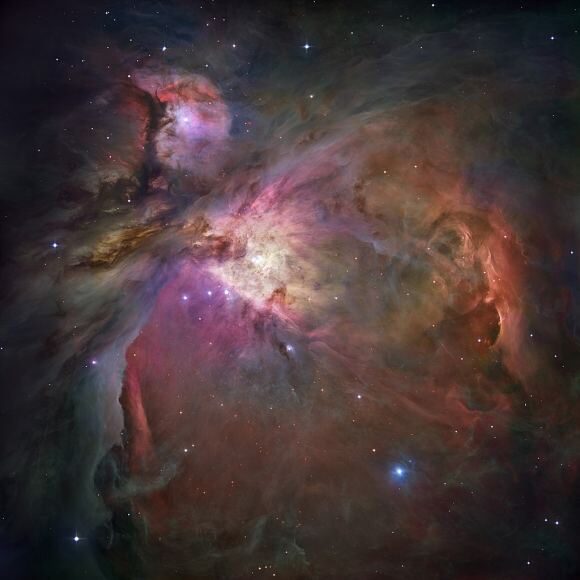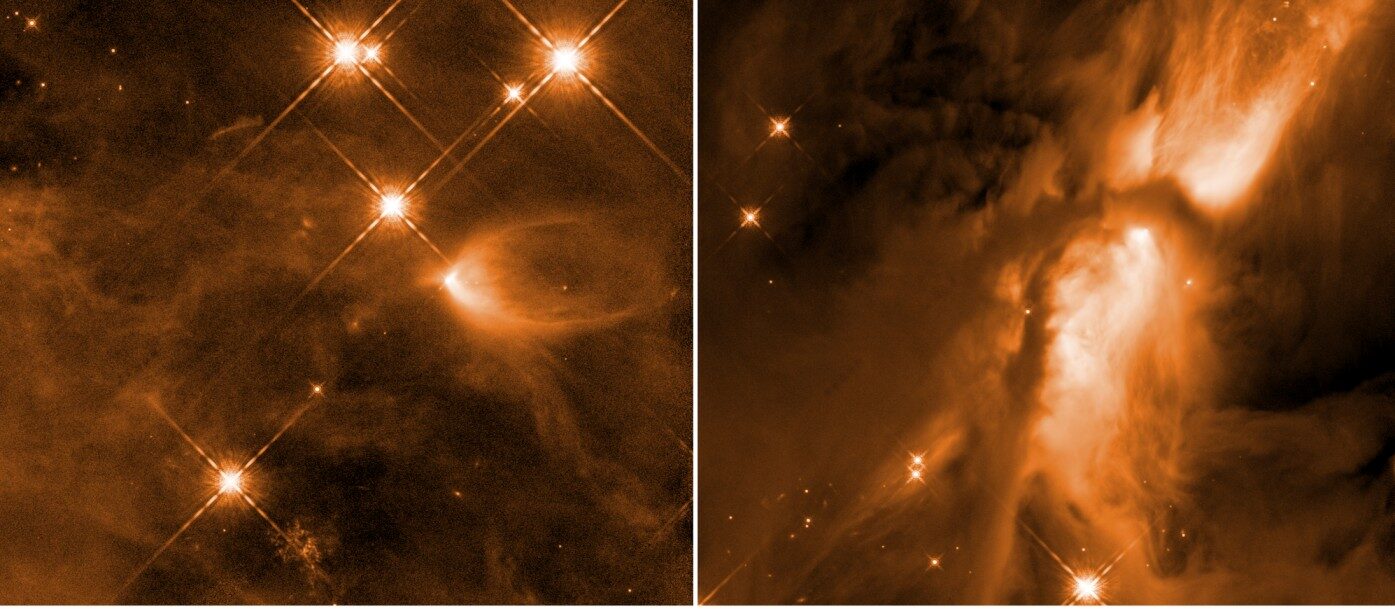What we do know about star formation is that they are born from enormous clouds of hydrogen gas. The gas gets clumped together and compressed by gravity, increasing in pressure and temperature until the mass grows large enough to set off nuclear fusion. But stars don't seem to absorb all of the gas in their surroundings. Something stops them from reaching enormous sizes.
Until now, the accepted model assumed that the excess gas gets blown away from the star in extremely powerful solar winds, shaped and directed by magnetic fields shooting out from the poles of the star. "There are remarkable 'U'- or 'V'- shaped structures extending to the north and south of a protostar," explains Nolan Habel, one of the researchers from the University of Toledo. "They are actually hollowed-out cavities carved into the surrounding gas by hurricane-like winds or jets of material expelled from the poles of the protostar."

The team made this discovery by studying a sample of 304 protostars at various stages of formation in the Orion Nebula (the closest region of star formation to Earth). The astronomers sorted the stars by age, and then used Hubble imagery to measure the shape and volume of the cavities created by jets. They were expecting to see the cavities grow over time, as the model suggests should happen. But, they didn't.
"We find that at the end of the protostellar phase, where most of the gas has fallen from the surrounding cloud onto the star, a number of young stars still have fairly narrow cavities," said Tom Megeath, another researcher on the team. This goes against all common theories of star formation, and is going to require further research to figure out what is happening. Why do stars stop growing, if not because of their polar jets?

Comment: Our own star is suspected to be part of a binary system: Sott Exclusive: Nemesis, not 'Nibiru' - Clarifying mainstream reports about 'a large ninth planet' that periodically sends comets our way
For now, these are just theories. It will probably take bigger and better instruments to find a concrete answer. The James Webb Space Telescope, set to launch later this year, might provide astronomers with the clues they need to solve the mystery. In the meantime, there's a whole lot of astrophysics textbooks out there that are going to need a revised edition.




duh.